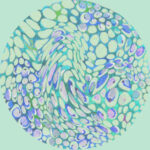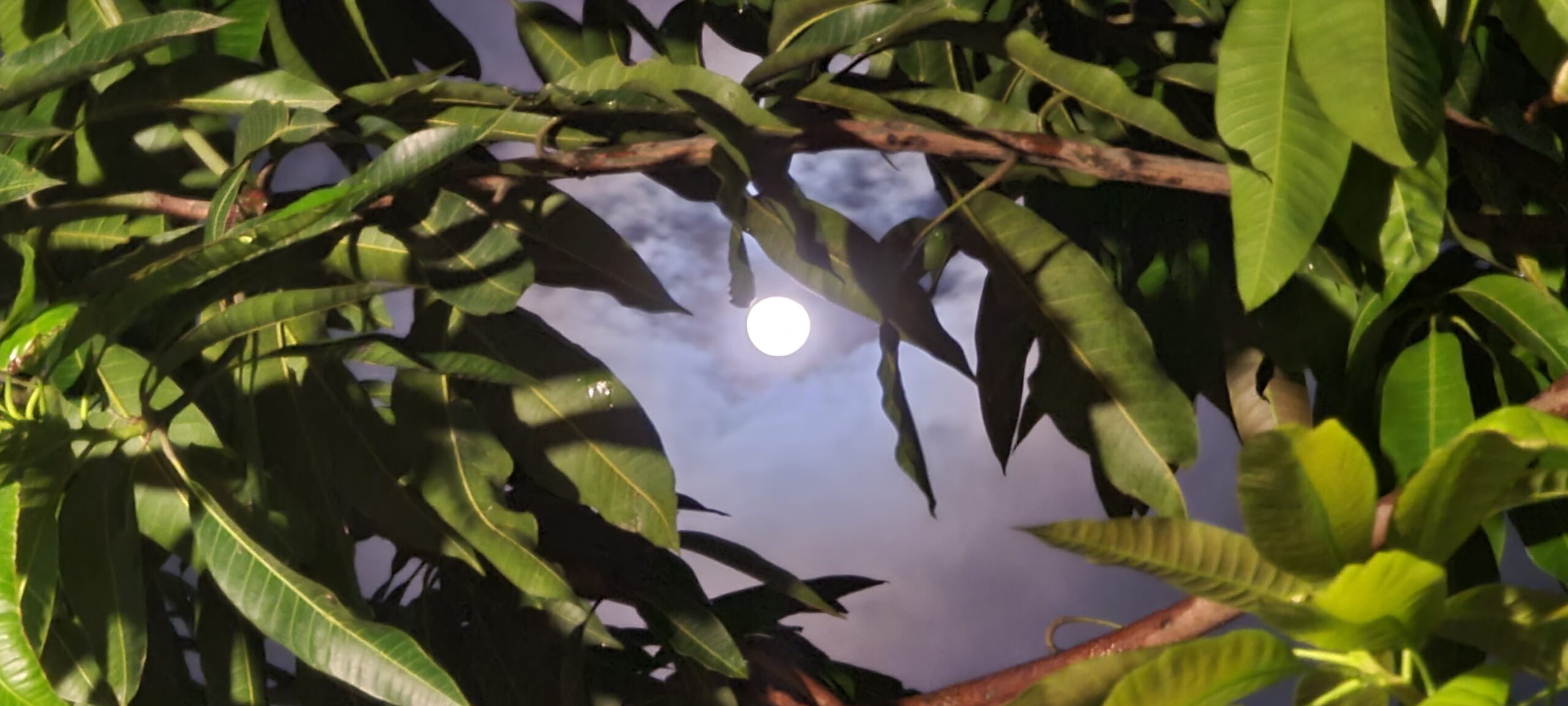Introduction
“Corona is the realization that we humans
are the frailest creatures when facing our Creator.…
It came among us when we forgot the blessings,
bounty, wisdom bestowed upon us.”
The epigraph above is from one of two poems by Wahyu Ranggati featured in this video montage. As the quote suggests, the COVID-19 virus – generally called “Corona” in Indonesia – reminds us of our vulnerability as humans. It tells us how frail we are in times of war, natural disaster, famine, or in this case a global pandemic. The poem suggests that apocalyptic events, like Corona, occur in times of widespread arrogance and selfishness, when we forget to give thanks for what we have, when we fail to recognize our common humanity.
The video shows the impact of COVID-19 on Indonesia’s most unprotected citizens: rural or small-town dancers and musicians who perform regularly, and all the others who participate in local performance events as crew, vendors, and audience. Unlike palace or conservatory performers who are salaried or earn far more for participating in an event, rural artists depend on the very small honorarium they earn at each event. Sometimes, they are only paid with a meal and perhaps offered fruit or vegetables to take home. Almost all the performances shown in this montage were a response to Corona. Some were ritualistic, with mantras against the virus; others were acts of defiance against the disease and the danger of infection; and still others were an integral part of traditional events, too important to be cancelled, despite the risks and state and local prohibitions. The video montage is meant to provide a glimpse of rural and small-town life where traditional, popular, and contemporary arts play an absolutely central role in communal activities.
Life in rural Indonesia, at least ideally, is all about community: sharing food, sharing work, sharing stories, sharing personal space, celebrating together, and mourning together. Indeed, rural life is intensely social. It is extraordinarily public and communal, yet at the same time private and personal. It is also highly structured around powerful cultural institutions such as religion – mostly Islam but also Hindu-Buddhism and various Christian faiths – and local traditional events organized around the life cycle, as well as calendrical, agricultural, and funerary rituals. These rituals have deep roots in Indonesian life and they reinforce interpersonal relationships. They constitute the glue that binds the community together and are so powerful, so important, that people will risk their health, even their lives, to continue holding them even while the pandemic rages. Thus, rural Indonesians have been particularly at risk during the COVID-19 pandemic.
This montage is based on video clips contributed by amateur videographers. Almost all of the video clips were made using inexpensive android phones. As a result, the quality and resolution of each video depends on the phone camera used. Some were relatively good while others were quite poor, reflecting the socio-economic status of the videographer. Technologies, like android phones, are a part of daily life in Indonesia, but the quality of such technologies varies according to socio-economic circumstances of the individuals who use them. Wealthy urbanites often use iPhones and Samsung Galaxies while the rural working poor depend on cheap knock-offs. Our challenge has been soliciting video clips of creative people living and working in circumstances defined by COVID-19 – and making the montage with the video clips we received. All of the clips are of rural or small-town events, involving Indonesia’s working-class or farming citizens. The low-resolution images are, we believe, particularly poignant because they show performers and audiences participating in these activities even while the government was attempting to control COVID-19 with curbs or bans on all social gatherings. Thus, we did not solicit videos from palace artists, conservatory faculty and students, or renowned performers who have been relatively safe from exposure and have had access to the vaccines. For well-heeled urban artists, the pandemic has been an inconvenience; but rural gigging performers have had to make hard choices: continue their day-to-day activities while at risk, or go hungry, defy traditional law (called adat), anger local ancestral and place spirits, and possibly estrange friends and extended family.
Finally, we had no intention of making any kind of documentary; we wanted something ethnographic yet visceral, sometimes even disturbing. The visual narrative is thinly descriptive of life in Indonesia. It tells us virtually nothing about why people are doing this or that, why they are having a kind of carnival next to a graveyard, why women and children are eating together on a sidewalk, why little girls are riding dancing horses, or why young men and women are making music or dancing together. The montage simply shows people coping, even enjoying themselves, during and despite the pandemic. We eschewed including a verbal narrative (a voice-over or subtitles) in the montage. The notable exceptions are the two poems by Wahyu Ranggati, both composed as a direct response to the pandemic. The poems are read by the poet himself – certainly also a kind of performance. We believe his words provide crucial context and a foundation for its visual narrative: a story of identity, community, tradition, and spiritual faith. The poems tell us what Indonesians have come to think about Corona, how the pandemic exposes our true selves as humans, how it reveals what it means to be a Muslim, and what it means to be Indonesian. Ranggati is an active dancer, actor, teacher, and poet living in Tegal, Central Java. He continues to send us poems occasionally, reciting each one directly from memory in WhatsApp audio messages.
Interview with René T.A. Lysloff and Sri Dwi Wahyuni by Genie Yoo
Genie: What are some of the tensions that have been revealed in Indonesian society, particularly among local artists and performers, during the pandemic?
René: Dwi and I noticed that there was this injustice, an inequity of access, when the vaccine was first rolled out in Indonesia. There was a promotion where the local government offered 500 vaccines for artists.
Dwi: Yes, these vaccines for artists were part of a special program directed by the President of Indonesia. They were intended for artists who make a living from their performances.
René: The government publicized it locally and you had to register online. Dwi and I talked about it. You know, we’re fortunate. We can live comfortably here in our place: we work in our studio, we have a beautiful garden. We believed that the vaccine should be available to people who really need it: rural, non-elite artists whose livelihoods depend on performing in front of an audience, a community for ritual events. But what ended up happening was that the vaccine became a kind of a status symbol. All of these well-known, established artists, people who work for film and theater organizations – all of these artists who don’t have to go out every day and perform in front of an audience – got vaccinated.
Dwi: Yes, they were artists who were already comfortable. Rich.
René: They didn’t have a real urgency to be vaccinated. After getting vaccinated, they received a little bag of “sembako” (the nine essentials), a small bag with some oil, rice, maybe half a dozen eggs, sugar, salt, among other basic items to take home. A lot of well-to-do artists got vaccinated then posted photos of themselves on Facebook, waving around their bag of essentials, as if it were a prize they won. It was disgraceful. Many rural artists we know – from Klaten, Indramayu, Pacitan – are gigging artists who live day-to-day off their performances. None of them had a chance to get vaccinated. The people who needed the bag of essentials didn’t get it. It was an outrage. This revealed an inequity: if you have money, you have access; if you don’t, you don’t have access. This was what got us thinking about the video montage: to showcase artists who are not big names locally, the rural or small-town artists, good artists who are also working artists. We didn’t invite anyone from the palace or the conservatories. We wanted the working artist to have a voice. We wanted them to be seen. There is an inequity of access here, like elsewhere, but it’s particularly stark. If you have money in Indonesia, you have access to almost everything; if you don’t, you don’t have much of anything. That includes healthcare, proper education, even police protection.
Genie: You bring up so many interesting points, about class differences, money, access, and power. I’m glad you decided to showcase rural artists in the video. Can you tell us a little more about the role of space in the montage and the connection between space and identity? Because the video begins with the entrance into a cemetery, but there’s a sudden turn with the performance.
Dwi: The performance in the opening scene was a ritual. A ritual to clean the whole area of the cemetery. It had been a long time since that space had been cleaned because the government had banned communal and ritual gatherings during the pandemic. So people took it upon themselves to do it. It was voluntary; they didn’t get paid. It’s supposed to be a happy event. The view of death here is interesting. People have a fear of ghosts around graveyards. But in rural Java, it’s just a fact of life. There isn’t necessarily a solemness around a graveyard, especially when there isn’t a funeral taking place. People are still respectful, but they are fairly relaxed. That performance was a part of the ritual to cleanse the place of Corona.
René: What wasn’t in the video is that that graveyard was close to a mosque. The mosque is often included in the cleaning process. Even though the government still had a lockdown in place, the people just did it. This year, they couched it as an anti-Covid ritual. To cleanse the cemetery of dead leaves and grime, but also of dead spirits and the virus. It was to exorcise Covid and evil ones from the graveyard. That ritual was a defiance. Many seasonal and life cycle rituals have been repackaged as a ritual against Covid.
Genie: This connection between the material and the immaterial world, the seen and the unseen is fascinating. What are the connections between understandings of Covid and illness and the spiritual world? How have everyday Indonesians understood Covid in general?
Dwi: Yes, there is a belief. We’ve been hearing announcements from the mosque, from the loudspeaker, of the names of people who died. It went on for days every single day. We heard the ambulance, too. Then there was a ban on communal gathering. But people continued to gather, to eat together, and to pray together. And one day, these announcements disappeared. Indonesians believe in the reality of the virus, of Covid, but we also very much believe that it’s a kind of curse from a different realm. We also believe in the efficacy of the vaccine, but we also believe in the efficacy of the rituals we perform.
René: When people are sick, they sometimes go to both traditional healers (dukun) and doctors. There was an artist I knew whose child was sick. They went to the healer first then the doctor who gave them aspirin. They did both but they went to the doctor a bit too late. It’s not that they don’t believe that Covid doesn’t exist. But there is a fascinating relationship between traditional practices and modern medicine in Indonesia. It’s an odd and conflicting relationship. It’s a three-way tension: tradition, Islam, and western modernity. Indonesians are constantly in the middle and they navigate through them as a part of everyday life.
Dwi: Yes, but sometimes it’s not very conflicting. There are very fashionable and modern people who are still very traditional. They are also very much influenced by religion. It’s all medicine.
Genie: Dwi, as a dancer, I wanted to ask you about your experiences of performing during the pandemic. There has been this overwhelming attention on the body and on health generally. Did the pandemic influence how performers thought about and used their bodies in ritual?
Dwi: For dancers, the feeling is the same, but there is a new anxiety: regulation. There’s a feeling of limitation. I like to dance with the feeling of freedom. Energy. Movement. Breath. It’s like a sport. Dancing with a mask on has felt limiting. It affects the breath. I refuse to dance on zoom, without a real audience. It’s too hard. I cannot feel. There is no energy from a virtual audience. If the real audience disappears, it’s like dancing in an empty room. In order to dance for a long time, that energy, too, must come from the audience. It’s not just about the dancer’s body.
Genie: I’m curious about the role of technology here. In villages and in rural areas, were people using their phones for virtual performances? Or did they prefer to perform in person?
René: This comes back to the problem of access. School is an example. In villages, children only had phones for their virtual connection to education. They had phones and they topped up. A lot of people in rural areas live on the edge. Having cash is a touch-and-go thing. I mean, they’ll buy motorbikes and cellphones, since they’re necessities. They have used technologies to meet their needs during the pandemic; they’ve adapted to the technology. But paying for internet turned out to be a big burden for the average family in rural areas. Virtuality is still seen as a luxury there.
Dwi: Rural artists are really stuck. They only have their phones. Usually, for these artists, communal events are their livelihood: weddings, circumcision, cleansing of the village, rituals for giving thanks. All of that disappeared during the pandemic. You can’t do this on zoom. It’s impossible. As Rene was saying, during the pandemic, children use the internet for education. But there is a quota for the internet. Every time children needed to attend class virtually, they had to top up. I know someone who has three children who are all in grade school. But the family only has one phone. How does one divide one phone among three children?
Genie: Now I remember, living in Yogya and topping up, not only for data on my phone but also for internet and electricity at home. This seems very different from Jakarta. How did rural artists and their families deal with this?
Dwi: There were no ritual events, so there was no money. Many artists have had to seek other jobs for survival. They became hawkers, pedicab drivers, construction workers. They tried to live by leaving the arts. It feels as if the arts were banned because communal events were banned. Understandably, the government needed to prioritize health during the pandemic. But life events were how artists made their livelihood. Their economic realm depends almost entirely on these communal events, some of which you see in the video. As artists, we just wait and wait. Village artists have survived, because communal connections have not been broken. By contrast, in cities, there has been more isolation. They will die of starvation. In the countryside, people help. In some ways, non-elite artists in cities have been impacted more heavily than rural artists who live in supportive communities.
René: Most of our clips are from rural performances, except perhaps one. Just to reiterate, ritual events were banned, outlawed in Indonesia. But people in rural areas sometimes held them, paid off the cops, which made the event that much more expensive.
Dwi: Yes, so in the cities, these regulations were much more stringent. But in the countryside, there was a little more room to manoeuvre. Local authorities in rural areas could be bought off or convinced.
Genie: Can you tell us a little more about the poet Wahyu Ranggati?
Dwi: Ranggati is actually a dancer, but he also loves to write poems. He sends me poems on Whatsapp. He sent both of these poems about Covid very suddenly. And we thought it would be perfect for Visualizing the Virus.
René: It was his voice in the recording that struck me. I liked that it wasn’t dramatic.
Dwi: Yes, it was more like a soliloquy, as if he was reciting it to himself.
René: The first poem is about Corona as a mirror of humanity. The whole question of life and death and how little we understand about ourselves resonated. It’s at the heart of what we’re experiencing globally. Living with Corona, living with the fear of infection, how it’s become so political. It’s such a tiny virus. The second poem is about the new normal of living with Corona. Like washing our hands. How one lives with Corona. He also talks about “the promise.” According to Javanese beliefs, when you are conceived, you are promised a good life, but you make a promise, too, that you will live as a good person. If you fulfil your promise, then the Creator gives you a good life. It’s all happening while you’re in the womb. It’s a mix of free will and pre-determination, free will and fate – the two are enmeshed together in the idea of “the promise.” It exposes how Corona makes us reflect on who we are as human beings. This idea of the promise seemed like a perfect closing.


